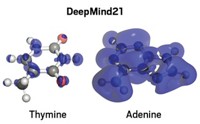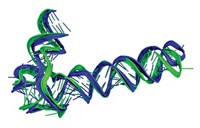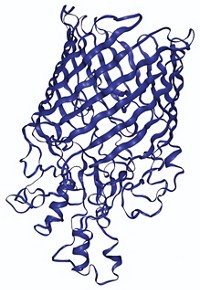Advertisement
Grab your lab coat. Let's get started
Welcome!
Welcome!
Create an account below to get 6 C&EN articles per month, receive newsletters and more - all free.
It seems this is your first time logging in online. Please enter the following information to continue.
As an ACS member you automatically get access to this site. All we need is few more details to create your reading experience.
Not you? Sign in with a different account.
Not you? Sign in with a different account.
ERROR 1
ERROR 1
ERROR 2
ERROR 2
ERROR 2
ERROR 2
ERROR 2
Password and Confirm password must match.
If you have an ACS member number, please enter it here so we can link this account to your membership. (optional)
ERROR 2
ACS values your privacy. By submitting your information, you are gaining access to C&EN and subscribing to our weekly newsletter. We use the information you provide to make your reading experience better, and we will never sell your data to third party members.
Materials
3D Print Exchange Helps Chemists Create Their Own Molecular Models
3-D Printing: NIH project enables virtually anyone to easily create thousands of structures
by Matt Davenport
August 24, 2015
| A version of this story appeared in
Volume 93, Issue 33
PRINT EXCHANGE 101
Watch this how-to video to learn how an NIH program is helping chemists and educators 3-D print their own molecular models. Credit: Matt Davenport/C&EN
It’s no secret that three-dimensional printing is giving molecular models a makeover with its ability to create accurate and arbitrarily complex structures (C&EN, May 19, 2014, page 32).
But what chemists and chemistry educators may not know is that they can now easily create their own models with a few clicks and the right connections, thanks to the National Institutes of Health’s 3D Print Exchange (http://3dprint.nih.gov).
The Print Exchange allows anyone to generate for free the files they need to print models of tens of thousands of chemical structures stored in online data banks. Users will need a 3-D printer and someone who can teach them how to use it, but both resources are becoming increasingly common, popping up at schools and public libraries.
The project’s leaders hope the Print Exchange will draw chemistry researchers and educators into the maker community, a catchall phrase for the collection of tech-savvy do-it-yourselfers keen on sharing resources and knowledge.
“We want to bring people in who can use the Print Exchange in the hard-core sciences,” says Meghan Coakley, the Print Exchange’s project manager and a contractor with the National Institute of Allergy & Infectious Diseases (NIAID). “We don’t have the expertise to build it into education, but we know there’s a lot of interest there. We can start the discussions on how to do it.”
Chemistry is an obvious discipline for such discussions to start. Its teaching has long relied on tactile molecular model kits, but it’s also a field where the Print Exchange’s roots began growing in 2007. Structural biologist Darrell E. Hurt began printing one-off models for colleagues at NIAID who wanted to get their hands on the proteins and biomolecules they were studying—literally.
The tangible printouts enabled scientists to get a fresh look at, and feel for, structures that they had studied for years, Hurt tells C&EN. “Having the 3-D print in their hands immediately opened up new understanding” of a structure’s form and function, he explains. “If a 3-D print is useful to these researchers by engaging more of their senses, imagine how useful it would be to students.”

As word of the models spread, Hurt needed to streamline his printing process to keep up with demand. A small crew set to work developing an algorithm to automatically convert digitized chemical structures downloaded from PubChem, the Protein Data Bank, and the Electron Microscopy Data Bank into printable files.

Developed in collaboration with the National Library of Medicine and the National Institute for Child Health & Human Development, the Print Exchange automates the digital transmutations that are often the steepest barrier to creating a 3-D print, Hurt says. Still, there’s pedagogical power in overcoming that barrier, says structural and inorganic chemist Jay R. Stork of Lawrence University, in Wisconsin.
Stork has not yet used the Print Exchange to create any models. But given his expertise with crystallography software, he’s inclined to help his undergraduate student researchers learn to convert computerized crystal structures into printable file formats. He says that the student researchers who develop these skills tend to get more out of 3-D printing than the students who simply handle the models in lectures.
But not all students will have the desire or resources to create these files, Stork says, and he does see great value in the models themselves. “When I draw a molecule on the blackboard, I’m asking my students to use their spatial reasoning and rotate it around in their minds,” he explains. “Many students have trouble doing that.”
Using 3-D printed models provides these students a bridge to understanding while they develop their spatial acuity, Stork says.
About one-third of students are tactile learners, meaning they learn better when they’re able to engage their sense of touch, says fellow Lawrence chemist David J. Hall, who studies virus structure. He also helped get Stork into 3-D printing and serves as an adviser to the Print Exchange.
“When learning biochemistry, it’s really nice to be able to hold a viral kinase’s SH2 domain and talk about what it’s doing,” he says. Even though teachers can now show stunning computer visualizations of complex structures to their classes, Hall says the physical models offer something more. “Students can’t get the same experience from an iPad.”

Through collaborations with designers, engineers, and physicians, the Print Exchange already hosts special libraries featuring printable prosthetics and anatomically correct models of human hearts. But the program’s molecular model menagerie is growing.
For instance, the Print Exchange hosts the files and instructions needed to create polypeptide models called Peppytides. In these models, 3-D printed parts are connected with inexpensive parts available at a hardware store to create structures that fold like real proteins.
Promita Chakraborty first built these models while working at Lawrence Berkeley National Laboratory. She’s since started a company, QuezyLab, to extend Peppytides’ functionalities and develop other models. Although scientists were already 3-D printing models of proteins, these structures were static and couldn’t mimic molecular motion at the nanoscale. Peppytides are the first accurate and scaled models to bridge that gap, Chakraborty says.
Numerous high school and college students have interacted with Peppytides to better understand protein folding, Chakraborty says, but she believes that the models have a lot to offer researchers as well. In fact, she started developing them to try and bring forth complex science that may be obscured in current computer models.
“Human beings are amazing at seeing shapes and changes that computers can’t,” she tells C&EN. She hopes to show that 3-D printing and accurate physical modeling can give researchers a third angle to approach their problems, adding physical modeling to experiment and computer simulation.
The question does linger as to what impact 3-D printing will ultimately have on education and research, but it’s clear the technology can change both. And the Print Exchange wants to play a pivotal role in driving that change.
The Print Exchange is more than just a website or a database, Hurt says. “It gives people access to the tools they need to create.”






Join the conversation
Contact the reporter
Submit a Letter to the Editor for publication
Engage with us on Twitter